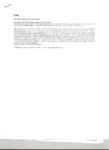Use este identificador para citar ou linkar para este item:
http://www.alice.cnptia.embrapa.br/alice/handle/doc/876510Registro completo de metadados
| Campo DC | Valor | Idioma |
|---|---|---|
| dc.contributor.author | LEITE, V. | pt_BR |
| dc.contributor.author | SILVA, R. | pt_BR |
| dc.contributor.author | YAMAGISHI, M. | pt_BR |
| dc.contributor.author | CHAHINE, J. | pt_BR |
| dc.date.accessioned | 2011-07-26T01:04:04Z | - |
| dc.date.available | 2011-07-26T01:04:04Z | - |
| dc.date.created | 2011-02-09 | pt_BR |
| dc.date.issued | 2010 | pt_BR |
| dc.identifier.citation | In: ANNUAL SYMPOSIUM OF THE PROTEIN SOCIETY, 24., 2010, California. [Abstracts...]. [S.l.: s.n.], 2010. | pt_BR |
| dc.identifier.uri | http://www.alice.cnptia.embrapa.br/alice/handle/doc/876510 | pt_BR |
| dc.description | Effect of mutations on the stability of proteins is a crucial issue in protein evolution. Such effects depend strongly on the overall hydrophobic protein character. In a recent work we suggested two scenarios for folding with distinct protein evolution consequences [1]. Under low hydrophobic conditions, proteins collapse concomitantly with the formation of their native state, and are less robust to mutations. This feature implies higher homology among proteins of different species. On the other limit, at high hydrophobicity, proteins collapse before folding, and this case they are more susceptible to mutations, suggesting lower homology among proteins of different species. In this work we investigate this conjecture studying the homology of four proteins for 41 different species, correlating it with their average hydrophobicity. The proteins studied were lysozyme, cytochrome-c, myoglobin and histone H3, and we used eighteen different hydrophobic scales. Along with the homology calculation, a comparison of structural similarity (rmsd) was also carried out. The results confirm the above suggestion, indicating that proteins at low hydrophobicity display low variations on sequences and conformations. On the other hand, at high hydrophobicity, proteins exhibit high variability on sequences and conformations. | pt_BR |
| dc.language.iso | eng | eng |
| dc.rights | openAccess | eng |
| dc.subject | Evolução de proteína | pt_BR |
| dc.subject | Hidrofobicidade em proteínas | pt_BR |
| dc.title | Role of hydrophobicity in protein evolution. | pt_BR |
| dc.type | Resumo em anais e proceedings | pt_BR |
| dc.date.updated | 2020-01-24T11:11:11Z | pt_BR |
| dc.subject.nalthesaurus | Proteins | pt_BR |
| riaa.ainfo.id | 876510 | pt_BR |
| riaa.ainfo.lastupdate | 2020-01-24 -02:00:00 | pt_BR |
| dc.contributor.institution | VITOR LEITE, IBILCE/UNESP; RICARDO SILVA, IBILCE/UNESP; MICHEL YAMAGISHI, CNPTIA; JORGE CHAHINE, IBILCE/UNESP. | pt_BR |
| Aparece nas coleções: | Resumo em anais de congresso (CNPTIA)  | |
Arquivos associados a este item:
| Arquivo | Descrição | Tamanho | Formato | |
|---|---|---|---|---|
| michel.pdf | 827.89 kB | Adobe PDF |  Visualizar/Abrir |









